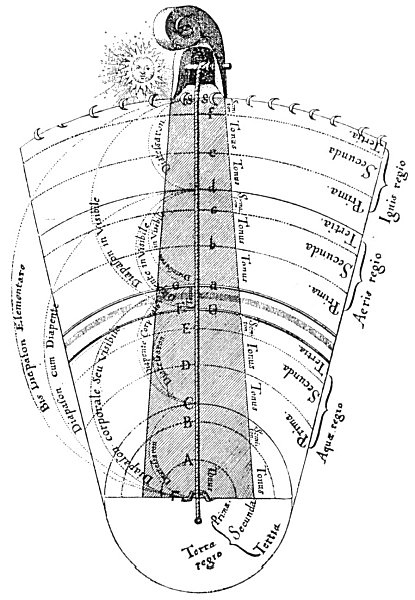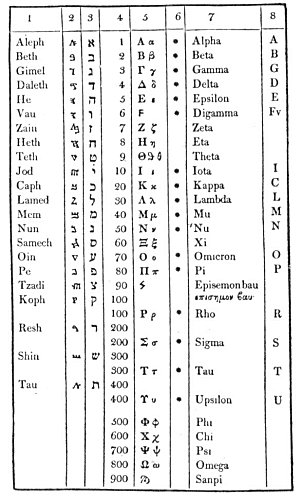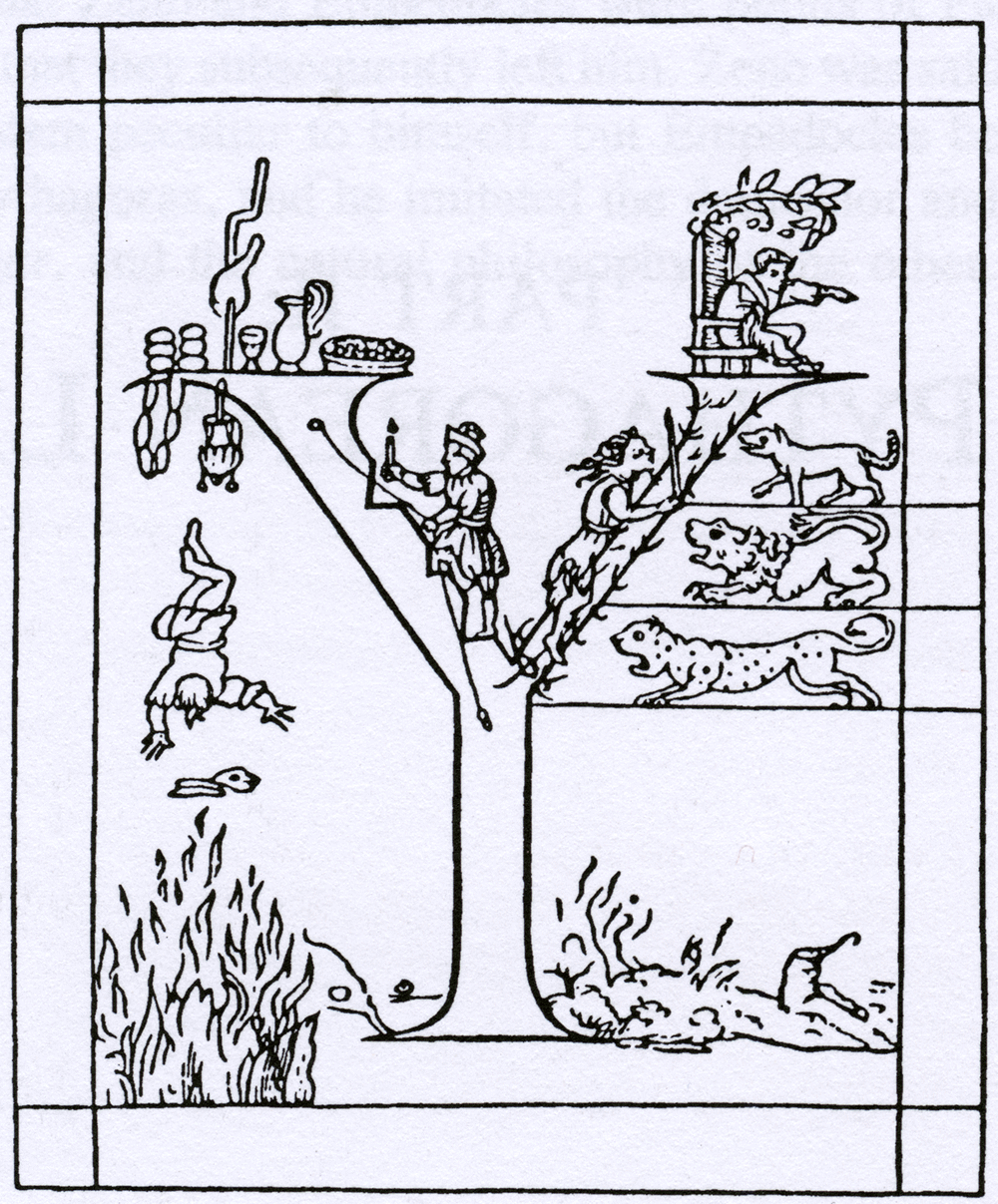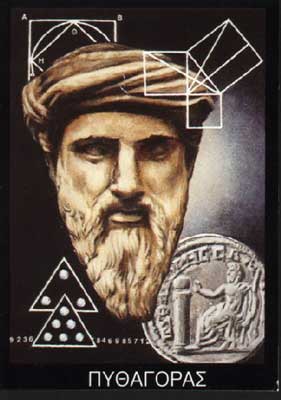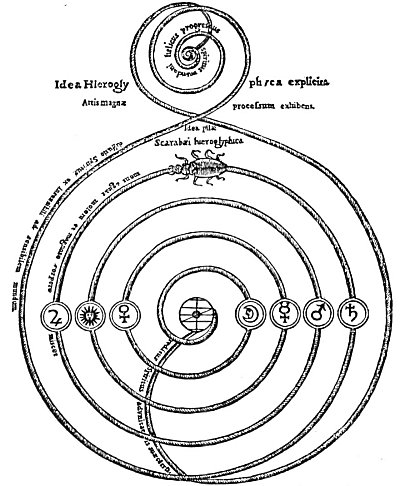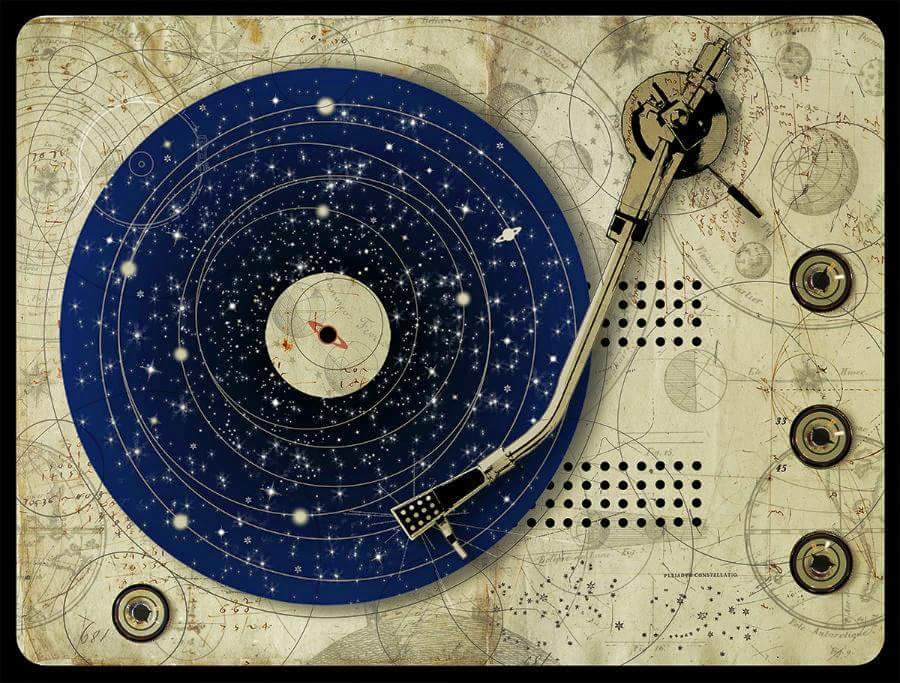There are numerous arbitrary arrangements setting forth the mutual relationships of the planets, the colors, and the musical notes. The most satisfactory system is that based upon the law of the octave. The sense of hearing has a much wider scope than that of sight, for whereas the ear can register from nine to eleven octaves of sound the eye is restricted to the cognition of but seven fundamental color tones, or one tone short of the octave. Red, when posited as the lowest color tone in the scale of chromatics, thus corresponds to do, the first note of the musical scale. Continuing the analogy, orange corresponds to re, yellow to mi, green to fa, blue to sol, indigo to la, and violet to si (ti). The eighth color tone necessary to complete the scale should be the higher octave of red, the first color tone. The accuracy of the above arrangement is attested by two striking facts: (1) the three fundamental notes of the musical scale–the first, the third, and the fifth–correspond with the three primary colors–red, yellow, and blue; (2) the seventh, and least perfect, note of the musical scale corresponds with purple, the least perfect tone of the color scale.
In The Principles of Light and Color, Edwin D. Babbitt confirms the correspondence of the color and musical scales: “As C is at the bottom of the musical scale and made with the coarsest waves of air, so is red at the bottom of the chromatic scale and made with the coarsest waves of luminous ether. As the musical note B [the seventh note of the scale] requires 45 vibrations of air every time the note C at the lower end of the scale requires 24, or but little over half as many, so does extreme violet require about 300 trillions of vibrations of ether in a second, while extreme red requires only about 450 trillions, which also are but little more than half as many. When one musical octave is finished another one commences and progresses with just twice as many vibrations as were used in the first octave, and so the same notes are repeated on a finer scale. In the same way when the scale of colors visible to the ordinary eye is completed in the violet, another octave of finer invisible colors, with just twice as many vibrations, will commence and progress on precisely the same law.”
When the colors are related to the twelve signs of the zodiac, they are arranged as the spokes of a wheel. To Aries is assigned pure red; to Taurus, red-orange; to Gemini, pure orange; to Cancer, orange-yellow; to Leo, pure yellow; to Virgo, yellow-green; to Libra, pure green; to Scorpio, green-blue; to Sagittarius, pure blue; to Capricorn, blue-violet; to Aquarius, pure violet; and to Pisces, violet-red.
In expounding the Eastern system of esoteric philosophy, H. P, Blavatsky relates the colors to the septenary constitution of man and the seven states of matter as follows:
| COLOR | PRINCIPLES OF MAN | STATES OF MATTER |
| Violet | Chaya, or Etheric Double | Ether |
| Indigo | Higher Manas, or Spiritual Intelligence | Critical State called Air |
| Blue | Auric Envelope | Steam or Vapor |
| Green | Lower Manas, or Animal Soul | Critical State |
| Yellow | Buddhi, or Spiritual Soul | Water |
| Orange | Prana, or Life Principle | Critical State |
| Red | Kama Rupa, or Seat of Animal Life | Ice |
This arrangement of the colors of the spectrum and the musical notes of the octave necessitates a different grouping of the planets in order to preserve their proper tone and color analogies. Thus do becomes Mars; re, the sun; mi, Mercury; fa, Saturn; sol, Jupiter; la, Venus; si (ti) the moon. (See The E. S. Instructions.)
THE FOUR ELEMENTS AND THEIR CONSONANTAL INTERVALS.
From Fludd’s De Musica Mundana. In this diagram Fludd has divided each of the four Primary elements into three subdivisions. The first division of each element is the grossest, partaking somewhat of the substance directly inferior to itself (except in the case of the earth, which has no state inferior to itself). The second division consists of the element in its relatively pure state, while the third division is that condition wherein the element partakes somewhat of the substance immediately superior to itself. For example the lowest division of the element of water is sedimentary, as it contains earth substance in solution; the second division represents water in its most common state–salty–as in the case of the ocean; and the third division is water in its purest state–free from salt. The harmonic interval assigned to the lowest division of each element is one tone, to the central division also a tone, but to the higher division a half-tone because it partakes of the division immediately above it. Fludd emphasizes the fact that as the elements ascend in series of two and a half tones, the diatessaron is the dominating harmonic interval of the elements.

Moe is the founder of GnosticWarrior.com. He is a father, husband, author, martial arts black belt, and an expert in Gnosticism, the occult, and esotericism.

